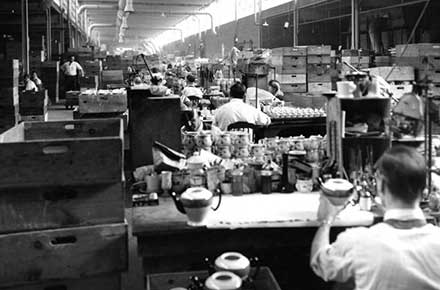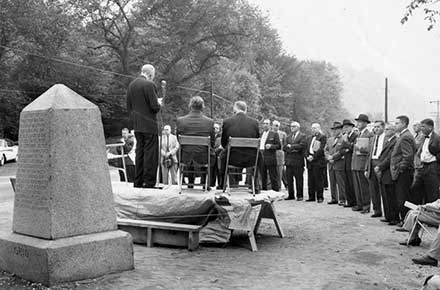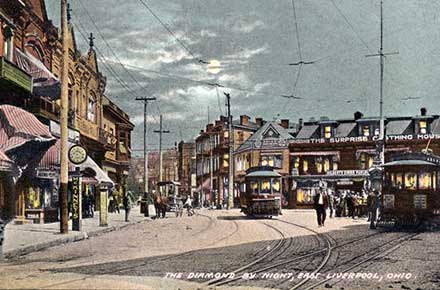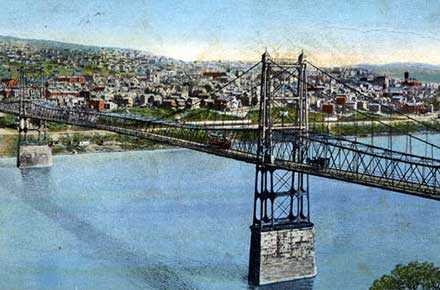East Liverpool, Ohio: A Glimpse of the Past
Located in the eastern part of Ohio as well as right at the Pennsylvania and West Virginia border, East Liverpool is the largest city in Columbiana County, with a population of about 12,600. The city’s location along the Ohio River and the abundance of yellow clay both attributed to how East Liverpool earned its nickname, "Crockery City".
Between 1840 and 1940 East Liverpool and the surrounding areas were home to over 100 potteries. Two potteries depicted in this collection are the Knowles, Taylor & Knowles Pottery – the largest pottery manufacturing facility in the 1880’s and the Homer Laughlin China Company – the largest pottery in the world in the twentieth century. Even in the 21st century pottery remains an important part of the East Liverpool industry.
East Liverpool is also known for the "Point of Beginning" historical marker located on the Ohio-Pennsylvania state line. Congress passed the Land Ordinance of 1785, which defined the size of a township. Near this monument was the first surveyor's marker from which all surveys west of this point, except Texas, radiate.
What would an East Liverpool Collection be without the inclusion of gangster, Pretty Boy Floyd and Rock Springs Park, once located in nearby Chester, West Virginia. Enjoy the familiar scenes and homes from the late 19th and earlier 20th century. Many scenes like the Diamond historic district have changed or disappeared with the times.
About the Collection
The images reproduced here are only a small portion of the East Liverpool Historical Society’s rich photo archive and the Cleveland Press Archives in Special Collections at the Michael Schwartz Library, Cleveland State University.
Additional Links
- East Liverpool Historical Society
- Carnegie Public Library, East Liverpool Ohio
- The Museum of Ceramics









